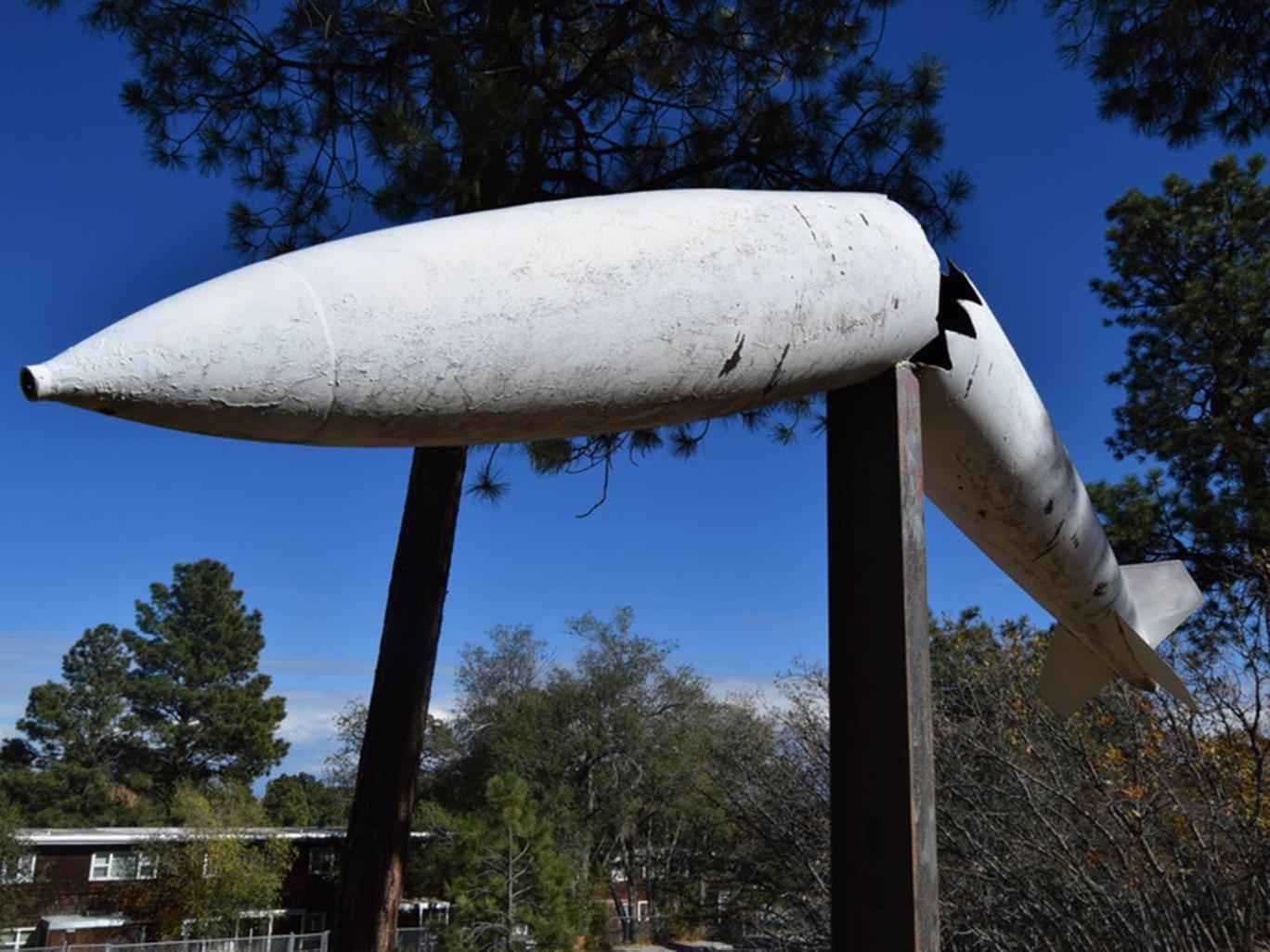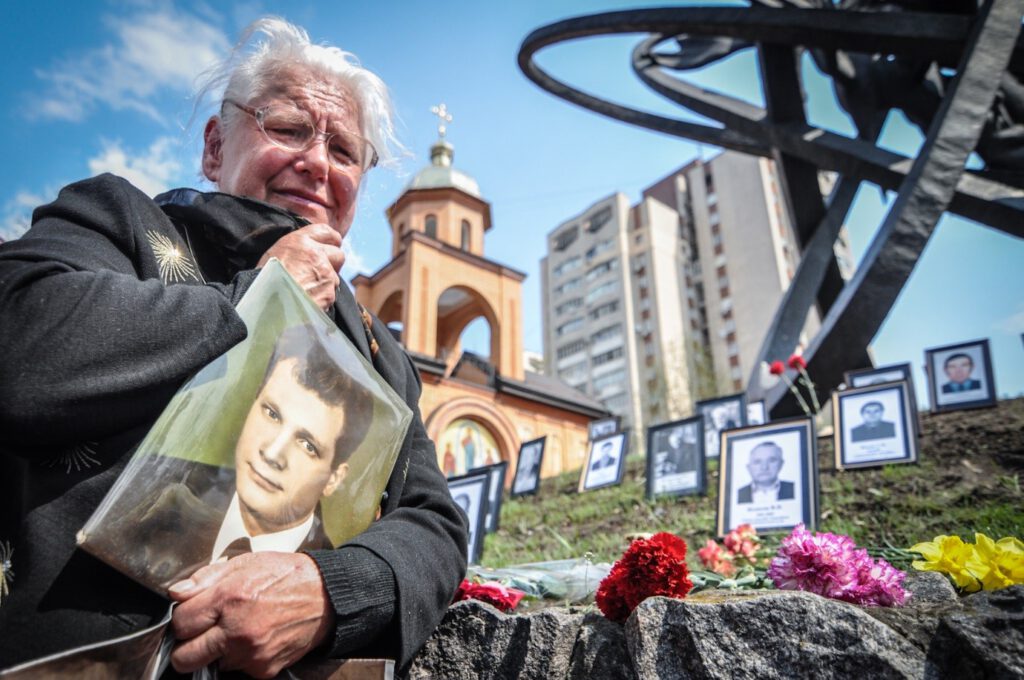Dr Becky Alexis-Martin, University of Southampton, Dr Stephanie Malin Colorado State University, and Dr Thom Davies, University of Warwick
The era in which we live is now officially described as an atomic Anthropocene or the “age of humans”, an epoch defined by humans’ impact on the planet – and one of its most distinctive features is radiation. The fallout (both literal and figurative) from international nuclear weapons testing, nuclear energy and nuclear disasters are embedded in our environment, but also in our society. And last year they all suddenly become rather more noticeable, confronting us with some alarming questions we never thought we’d have to answer.
Will Donald Trump’s election victory improve nuclear defence policy or plunge us into a new Cold War? Will the world continue moving towards nuclear weapon abolition, or will the nuclear powers keep up and grow their stockpiles instead? How should the world deal with North Korea’s repeated violations of the Test Ban Treaty? And do we really understand how the nuclear age has affected the survivors of nuclear accidents?
Memories of Catastrophe
In retrospect, 2016 was always going to bring these questions to the fore, marking as it did significant anniversaries of two of the world’s worst nuclear disasters: Fukushima (five years ago) and Chernobyl (30 years ago). While the health consequences of both incidents are still debated, their psychosocial effects and economic impact are beyond doubt.
Five years after the Fukushima accident, Japan is still working to decontaminate the affected area. It’s cost five trillion yen (about £35 billion) so far and demanded the labour of 26,000 clean-up workers – many of them vulnerable to exploitation and social exclusion.
Forced and so-called “voluntary” evacuees from Fukushima are still adjusting to life away from home. There are 100,000 of these “nuclear refugees” still displaced; two thirds have reportedly given up hope of ever returning. With the Tokyo 2020 Olympics looming, and compensation costs spiralling, the Japanese government recently declared more areas as officially safe – despite evacuees being reluctant to return. Their fears were stoked in November when an aftershock from the original Fukushima earthquake hit Japan. Thankfully, there wasn’t a second catastrophe.
We also saw the 30th anniversary of the Chernobyl disaster, which continues to effect a wide swathe of Ukraine and Belarus. Dealing with the consequences of the disaster consumes around 6% of Ukraine’s national budget, and 2.15m Ukrainians still live on territory that’s officially considered contaminated.
Around 350,000 people were forcibly evacuated from the Chernobyl region, but some refugees illicitly returned. This year marked the release of Babushkas of Chernobyl, a documentary that revisited the derelict Exclusion Zone, to discover elderly women feasting on home-grown produce, supping moonshine and singing lewd songs about the boyfriends of their youth.
While life in these regions is still tarnished by tragedy and pollution, recent research reveals the intricate coping tactics that these communities use to survive, by continuing life as usual and talking about the experiences and challenges they have faced.

An anti-atomic sculpture in Los Alamos. Photograph by Becky Alexis-Martin
Economic and environmental change
2016 was also a bad year for uranium. The uranium mining and production sector has been faltering ever since Fukushima, and this year’s international overproduction further depressed prices. Global production and extraction activity stalled, earning it the dubious distinction of 2016’s “worst-performing raw material”.
As the industry waits for the market to recover, debates rage over the future of the only current operational uranium mill in the US and proposed developments at sacred and ecologically fragile zones – the Grand Canyon, the Aboriginal Kakadu National Park in Australia, and the Karoo in South Africa. Meanwhile, precarious states such as the Ukraine and Kazakhstan have agreed to jointly produce uranium, also betting the industry will recover.
An emerging nuclear energy renaissance may improve the economic situation for uranium, exemplified in the UK by government approval this year of a new nuclear power plant at Hinkley Point C. Anticipated developments in China alone could mean a five-fold increase in demand. Low-carbon nuclear energy, and therefore uranium, may again become big business as the Paris Agreement on climate change starts to curb fossil fuel use.
But nuclear energy’s by-products still have major environmental impacts, and we still have no solution for managing nuclear waste in the long term. In the US, a potential revival of the repository project in Yucca Mountain has been posited by Trump’s advisors. Meanwhile, Australia is unwilling to provide long term storage, and the long term outcomes remain to be seen.
Test ban treaties and new Cold Wars
2016 also marked the 20th anniversary of the Comprehensive Test Ban Treaty (CTBT), an international agreement to end the era of nuclear weapons testing and help bring the Cold War to a close. There has been a shift in attitude towards the abolition of nuclear weapons this year; a UN referendum on nuclear disarmament on October 27 saw 128 nations vote to ban nuclear weapons altogether. But the motion was opposed by the UN’s nine nuclear states, including the US, Russia, and the UK.
The British parliament took a clear step in the other direction in the summer when it voted to expand the operational lifespan of the Trident deterrent to 2042, at a cost of approximately £23 billion. But at the same time, the British government at last moved to protect the well-being of its nuclear test veterans, providing funding for pioneering research into the inter-generational effects of nuclear weapons testing. This study will have international implications for our understanding of the culture and society that surrounds the families of the men who tested nuclear weapons.
That world may yet be getting more dangerous. 2016 also saw global nuclear policy openly violated by North Korea, which defied the CTBT to further its nuclear proliferation programme with tests in January and September. Unfortunately, nuclear technology cannot be un-invented. While there’s scant evidence that sanctions have changed North Korea’s behaviour, new ones were nonetheless imposed after the latest tests, meaning the country is unlikely to join a peacekeeping dialogue.
We cannot foretell what the future holds for the nuclear world order, and the world’s most powerful leaders don’t have any answers. When prompted in an interview to opine on global nuclear risks, Donald Trump remarked that: “It’s a very scary nuclear world. Biggest problem, to me, in the world, is nuclear, and proliferation.”
As we try to understand the meaning of our atomic era, we are beginning to realise that the social and cultural impacts of nuclear technology have not only defined a new geological era, but will eventually determine the vulnerability or resilience of our human world.
An earlier version of this article was published in The Conversation, and has been republished in The Independent and Daily Mail online. Becky Alexis-Martin is a senior research fellow in human and social sciences, University of Southampton, Stephanie Malin is an assistant professor of sociology, at Colorado State University and Thom Davies is a research fellow in the department of sociology, at the University of Warwick.
(Lead image: a Chernobyl widow holds a photo of her deceased husband at a memorial to the disaster in Kyiv, Ukraine. Photograph by Thom Davies.)
